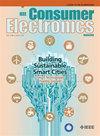DRGCN-BiLSTM: An Electrocardiogram Heartbeat Classification Using Dynamic Spatial-Temporal Graph Convolutional and Bidirectional Long-Short Term Memory Technique
IF 4.3
2区 计算机科学
Q1 ENGINEERING, ELECTRICAL & ELECTRONIC
引用次数: 0
Abstract
An automated cardiac rhythm classification using electrocardiograms is crucial for accurate and timely diagnosis of cardiovascular disease. Recent advances in deep learning have facilitated automated arrhythmias recognition, surpassing traditional ECG methods that depend on manual feature extraction. Despite significant progress in existing arrhythmias classification techniques, the current method fails to utilize spatial-temporal interaction and task-specific features include temporal dependencies among observations and a significantly imbalanced class distribution in the dataset. Thus, the accuracy of network-based ECG heart-beat classification still requires improvements. To address this issue, an effective classification algorithm combined with synthetic minority oversampling technique (SMOTE)-Tomek, dynamic perceptive region spatial-temporal graph convolutional network with bidirectional long-short term memory (DRGCN-BiLSTM) is proposed for effective intelligent arrhythmia recognition. ThisDRGCN-BiLSTM:基于动态时空图卷积和双向长短期记忆技术的心电图心跳分类
利用心电图自动进行心律分类对于准确、及时地诊断心血管疾病至关重要。深度学习的最新进展促进了心律失常的自动识别,超越了依赖于手动特征提取的传统ECG方法。尽管现有的心律失常分类技术取得了重大进展,但目前的方法未能利用时空交互作用和任务特定特征,包括观测值之间的时间依赖性和数据集中的显著不平衡类分布。因此,基于网络的心电心跳分类的准确性还有待提高。针对这一问题,提出了一种有效的分类算法,结合合成少数派过采样技术(SMOTE)-Tomek,具有双向长短期记忆的动态感知区域时空图卷积网络(DRGCN-BiLSTM)进行有效的心律失常智能识别。该模型采用可训练的加权$\epsilon $邻域图来捕捉心电段内时间序列的模式。SMOTE-Tomek技术解决了数据不平衡问题,而BiLSTM从图网络中捕获时间特征。在麻省理工学院- bih心律失常数据库上进行了验证,该数据库包含109253个心电节拍,实验结果表明,该方法的平均准确率分别为99.92%。与最先进的技术相比,所提出的方法具有优越的性能,可以更好地诊断心脏相关问题。
本文章由计算机程序翻译,如有差异,请以英文原文为准。
求助全文
约1分钟内获得全文
求助全文
来源期刊
CiteScore
7.70
自引率
9.30%
发文量
59
审稿时长
3.3 months
期刊介绍:
The main focus for the IEEE Transactions on Consumer Electronics is the engineering and research aspects of the theory, design, construction, manufacture or end use of mass market electronics, systems, software and services for consumers.

 求助内容:
求助内容: 应助结果提醒方式:
应助结果提醒方式:


